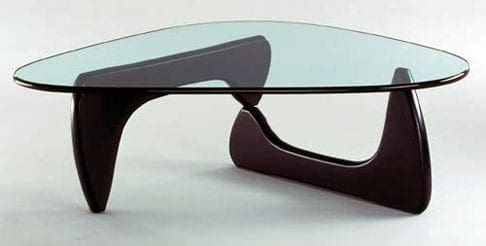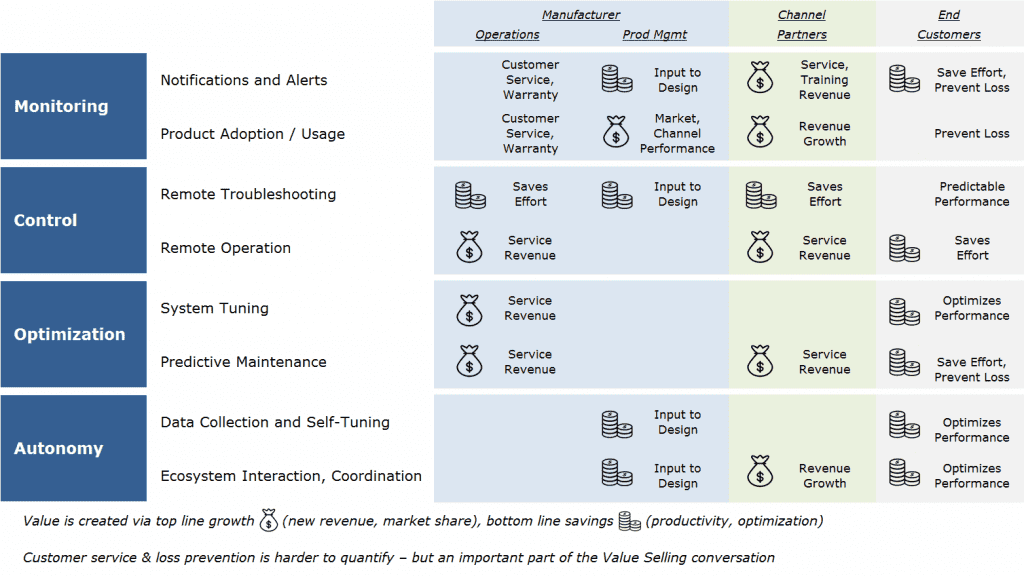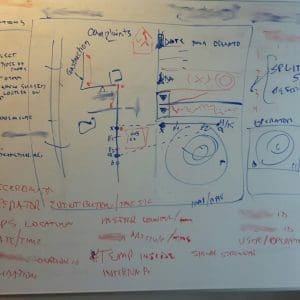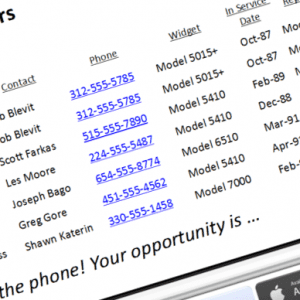A review of the Design decisions made when creating a particularly complicated diagram that communicates a significant shift in thinking.
In the past, I’ve written about creating value – one in a series of posts on the Internet of Things. The feedback was great, but some of the more interesting reactions were focused on the illustration – something I built a few months ago, when I needed to convey a large amount of meaning in a relatively small space. Specifically, I got questions on the graphic design elements; what was the original story I was trying to tell? Who was the audience, and what was going through my head as I made the design choices?
Those are tough questions to answer; partially because this image was created a few months ago, but primarily because many design decisions are made “in the moment”. Still, there are a couple of elements that stand out in my memory – things that I believe are all critically important when communicating a significant shift in thinking.
- Know your Audience: This was originally created for an executive audience who are used to seeing dense PowerPoint slides, filled with lots of information. It’s fascinating – they don’t want to see a large number of separate slides, so the answer is to put a lot of information into a small number of pages. I’ve always thought that the world uses the wrong medium when we communicate dense information by PowerPoint – why not a Word document (white paper or case study, anyone?). And why 11 x 8.5 instead of 8.5 x 11? Landscape format might be suited for big screens and tablets, but we seem to print this stuff out a lot. Still, it’s customary and expected – and so, instead of building a series of pictures to tell the story, my version is all in a single table.
- Information Structures the Picture: The table tells the story of value created along the way, from manufacturer to end customer. Typically, you see the Value Chain drawn horizontally, with fancy little chevrons making up the links; however, the slide started getting visually busy. Four different use cases, four copies of the Value Chain, four sets of angles to confuse the eye … ick. I switched to simple rows of blocks – and since I like consistency, symmetry, and control, I built a table.
<aside>I am a big Tufte fan (previously), and I like taking as much ink of the page as I can – leaving behind only what is truly required to get to the point across. Simple shapes with consistent dimensions are much easier to read. And note how I delineate the rows by a lack of color, not a solid border. Negative space can be your subtle friend …</aside>
- A Picture Tells 1000 Words: Some people learn by reading, some learn by hearing, some by seeing, others by doing. I wanted to add another dimension, differentiating between top and bottom-line benefits – but there was enough text already. A few icons help illustrate the idea, simply and cleanly – and a repeating icon doesn’t seem as intrusive as a repeating set of text.
Reflecting back on the process was an interesting exercise for me – I see elements of design thinking in many aspects of my work. It’s not about subjective opinions of what looks good, but a thoughtful and purposeful use of all the tools at your disposal to make change happen. In this case – well, all I wanted to change was the reader’s understanding of my story. But Design Thinking, and thinking about design, can have a big impact on any change management effort. Stay tuned for more … I’ve got a examples to share and stories to tell …
26 April, 2016








This Post Has 0 Comments